|  
 
 
 
 
 
 
 
 
 
 
 
 
 
 | | | |  I don’t like to use the same cover illustration twice, so here’s an interior illustration for a poem in the March 2014 Asimov’s. I don’t like to use the same cover illustration twice, so here’s an interior illustration for a poem in the March 2014 Asimov’s. | | “Through Portal”
by Dominica Phetteplace
First publication: Asimov’s Science Fiction, Mar 2014

During a picnic on a planet under study, eight-year-old Emmy wanders away and through a portal that is only partly a time machine. 1, 1, 2, 3, 5, 8, 13, 21, 34, . . . 1, 1, 2, 3, 5, 8, 13, 21, 34, . . . 
| |
| | | | |

 
 
 
 | | | | 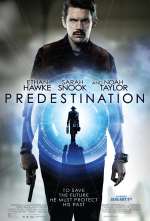

| | Predestination
adapted by Micheal Spierig and Peter Spierig (both also directed)
First release: 8 Mar 2014

I was so disappointed with this movie that I’m going to have to write a spoiler. So if you don’t want to be spoiled, please stop reading now.

Here’s the problem: Heinlein’s story “—All You Zombies—” was the last word on one specific kind of time travel story: The story is which there is but one timeline. If you travel to the past and do something, it is because you traveled to the past and did that thing. But the Spierig brothers completely missed this point by introducing an older version of the Unmarried Mother who has newspaper clippings of other timelines that he has changed. The nice closed sexual loop is still present in the movie, but that wasn’t enough to stop my disappointment at the drubbing that the central story idea took. I wasn’t so hot on the music either (except for “I’m My Own Grandpa”), but the relationship between the Barkeep and the Unmarried Mother was spot on as was the depiction of time travel and the foreshadowing. Unmarried Mother: So I can do this, I can change my past? Unmarried Mother: So I can do this, I can change my past?
Barkeep: Yes, you can.
U.M.: Have you ever thought about changing yours?
BK: I never deviate from the mission.
U.M.: Never?
BK: Never. . . . Look, I’ll pick you up when you’re done, all right?
U.M.: No, whoa, where are you going?
BK: Don’t worry. I’ll be around, trust me.
U.M.: Do I? . . . Do I have a choice?
BK: Of course. You always have a choice. 
| |
| | | | |

 
 
 
 
 
 
 
 
 
 
 
 
 
 
 
 
 
 
 
 
 
 
 
 
 
 
 
 
 
 
 
 | | | | 

| | “The Color of Paradox”
by A.M. Dellamonica
First publication: tor.com, 25 Jun 2015

 The Allies, facing the inevitable end of the world at the hands of the Russo-German Axis in the second Great War, send a young man back to 1920 Seattle where he hopes to enlist the aid of Agent Sixteen and change the course of the next three decades provided, of course, that he can overcome the psychological-horror-story side effects from the time travel. The Allies, facing the inevitable end of the world at the hands of the Russo-German Axis in the second Great War, send a young man back to 1920 Seattle where he hopes to enlist the aid of Agent Sixteen and change the course of the next three decades provided, of course, that he can overcome the psychological-horror-story side effects from the time travel.

Alyx Dellamonica says that this story is just the start of a longer work that she originally conceived but hasn’t yet developed. I would like to see the longer piece and have a better understanding of the psychological effects of time travel in Dellamonica’s universe. My stomach cramped and I was, all at once, brimming with fury. I had an urge to chase her out of the room, to smash her head against the banister until her blood ran between my knuckles. To lick, drink . . . I touched my tongue to the notch between my clenched index and middle fingers, imagining salt, and saw a flash of color . . . My stomach cramped and I was, all at once, brimming with fury. I had an urge to chase her out of the room, to smash her head against the banister until her blood ran between my knuckles. To lick, drink . . . I touched my tongue to the notch between my clenched index and middle fingers, imagining salt, and saw a flash of color . . . 
| |
| | | | |

 
 
 
 
 | | | |  This story also had an audio production on podcastle.com. This story also had an audio production on podcastle.com.

| | “Makeisha in Time”
by Rachael K. Jones
First publication: Crossed Genres

 My favorite Star Trek episode from the entire franchise is The Inner Light, where Picard lives an entire life on a long-dead alien planet. That episode has no time travel, since the life was a virtual life lived out in minutes in his mind, but Makeisha’s form of repeated living past lives on Earth is actual time travel. My favorite Star Trek episode from the entire franchise is The Inner Light, where Picard lives an entire life on a long-dead alien planet. That episode has no time travel, since the life was a virtual life lived out in minutes in his mind, but Makeisha’s form of repeated living past lives on Earth is actual time travel.

For me, Makeisha’s story suffered from having no sustaining characters outside of Makeisha herself, although I did enjoy the idea. She will be yanked from the present without warning, and live a whole lifetime in the past. When she dies, she returns right back to where she left, restored to a younger age. It usually happens when she is deep in conversation with her boss, or arguing with her mother-in-law, or during a book club meeting just when it is her turn to speak. She will be yanked from the present without warning, and live a whole lifetime in the past. When she dies, she returns right back to where she left, restored to a younger age. It usually happens when she is deep in conversation with her boss, or arguing with her mother-in-law, or during a book club meeting just when it is her turn to speak. 
| |
| | | | |

 
 
 
 
 
 
 
 
 | | | | 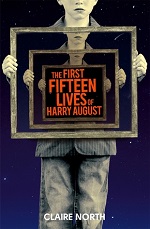

| | The First Fifteen Lives of
Harry August
by Claire North (aka Catherine Webb)
First publication: 28 Aug 2014

 Harry August is living his life over and over again, always born to the same mother in the same time and place, but living in a world that’s altered each time because of the actions of the others who are also reliving their lives. The world Claire North (aka Cat Webb) built has a rich, interlocking structure: The repetitions are synchronous in that the entire life of the universe plays out before restarting from the beginning for everyone, but only a handful, such as Harry, remember the previous time around. Those who do remember have formed a society whose overriding purpose is to keep the status quo because once a change is made and a person is not born during a cycle of the universe, that person will never again be born. The society also arranges a system to send messages back through the generations by having young reborn children contact older society members who are near death. From time to time, changes in the universe cause new members to be born, and thus, Harry appears just in time to become embroiled in a vicious plot to change everything. Harry August is living his life over and over again, always born to the same mother in the same time and place, but living in a world that’s altered each time because of the actions of the others who are also reliving their lives. The world Claire North (aka Cat Webb) built has a rich, interlocking structure: The repetitions are synchronous in that the entire life of the universe plays out before restarting from the beginning for everyone, but only a handful, such as Harry, remember the previous time around. Those who do remember have formed a society whose overriding purpose is to keep the status quo because once a change is made and a person is not born during a cycle of the universe, that person will never again be born. The society also arranges a system to send messages back through the generations by having young reborn children contact older society members who are near death. From time to time, changes in the universe cause new members to be born, and thus, Harry appears just in time to become embroiled in a vicious plot to change everything.

I was fortunate to meet Cat Webb at the 2015 Campbell Conference in Lawrence, Kansas, where she cheerfully talked to me and Rob Maslen about anything and everything during the week leading up to the announcement of Harry August as the winner of the 2015 Campbell Award for the best novel of the year. Yay, Cat (and yay for your friendliness and wry sense of humor)! My first life, for all it lacked any real direction, had about it a kind of happiness, if ignorance is innocence, and loneliness is a separation of care. But my new life, with its knowledge of all that had come before, could not be lived the same. It wasn’t merely awareness of events yet to come, but rather a new perception of the truths around me, which, being a child raised to them in my first life, I had not even considered to be lies. My first life, for all it lacked any real direction, had about it a kind of happiness, if ignorance is innocence, and loneliness is a separation of care. But my new life, with its knowledge of all that had come before, could not be lived the same. It wasn’t merely awareness of events yet to come, but rather a new perception of the truths around me, which, being a child raised to them in my first life, I had not even considered to be lies. 
| |
| | | | |

 
 
 
 
 
 
 
 | | | | 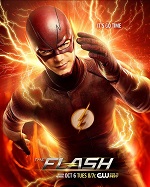

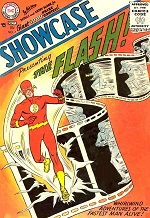

| | The Flash
adapted by Greg Berlanti, Andrew Kreisberg and Geoff Johns
First episode: 7 Oct 2014

Time travel is implied right from the first episode of the CW’s rendition of The Flash where a newspaper from the future is seen in the closing scene. The rest of the first season builds a fine time-travel arc that includes a nefarious time traveler from the far future, a classic grandfather paradox (sadly not examined), a do-over day for the Flash (which Harrison Wells calls “temporal reversion”), and a final episode that sees the Flash travel back to his childhood (as well as a hint that Rip Hunter himself will soon appear on the CW scene). The primary time-traveling nemesis, wiped out in Season One, reappears in Episode 11 of Season 2. I suspect that more time travel is on the horizon for Barry Allen and his cohorts (especially Cisco). Wells: Yes, it’s possible, but problematic. Assuming you could create the conditions necessary to take that journey, that journey would then be fraught with potential pitfalls: the Novikov Principle of Self-Consistency, for example. Wells: Yes, it’s possible, but problematic. Assuming you could create the conditions necessary to take that journey, that journey would then be fraught with potential pitfalls: the Novikov Principle of Self-Consistency, for example.
Joe: Wait—the what, now?
Barry: If you travel back in time to change something, then you end up being the causal factor of that event.
Cisco: Like . . . Terminator.
Joe: Ah!
Wells: Or: Is time plastic? Is it mutable, whereby any changes in the continuum could create an alternate timeline?
Cisco: Back to the Future.
Joe: Ah, saw that one, too. 
| |
| | | | |

 
 
 | | | | 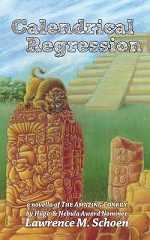

| | The Conroyverse
aka The Amazing Buffalito and Conroy Books
by Lawrence M. Schoen
First time travel: “Calendrical Regression” in Nov 2014

 I stumbled across one of the Amazing Buffalito and Conroy stories while reading something else, and it seemed that the Buffalito Reggie (the cute miniature bison that eats anything and farts oyxgen) just had to be living in a universe with time travel. In “Trial of the Century,” Reggie's companion Conroy (the billionaire ex-ceo turned spacefaring on-stage hypnotist) has a time-travel gag in his act; and in the first novel, Buffalito Destiny, the entire ex-state of Texas has differing time rates from one spot to another. But I had to know for sure whether the amusing pair ever ran into real time travel, so I wrote to Lawrence Schoen, and he quickly and happily pointed me toward the most recent novella, “Calendrical Regression” wherein Conroy brings a Mayan high priest to the present day from 89 generations in the past. I stumbled across one of the Amazing Buffalito and Conroy stories while reading something else, and it seemed that the Buffalito Reggie (the cute miniature bison that eats anything and farts oyxgen) just had to be living in a universe with time travel. In “Trial of the Century,” Reggie's companion Conroy (the billionaire ex-ceo turned spacefaring on-stage hypnotist) has a time-travel gag in his act; and in the first novel, Buffalito Destiny, the entire ex-state of Texas has differing time rates from one spot to another. But I had to know for sure whether the amusing pair ever ran into real time travel, so I wrote to Lawrence Schoen, and he quickly and happily pointed me toward the most recent novella, “Calendrical Regression” wherein Conroy brings a Mayan high priest to the present day from 89 generations in the past.- 1. “Buffalo Dogs’ (Summer 2001) in Absolute Magnitude
- 2. “Telepathic Intent” (29 Jul 2003) in Buffalogic, Inc.
- 3. Buffalogic, Inc. (29 Jul 2003) collects 1-2
- 4. “The Matter at Hand’ (Mar 2005) in Aliens and AIs
- 5. “Requiem’ (Spring 2005) in Absolute Magnitude
- 6. “Buffalogenesis’ (2006) novelette
- 7. “A Buffalito of Mars’ (25 Jun 2007) in Visual Journeys
- 8. “Buffalogistics’ (2008) collects 4-5
- 9. Buffalito Destiny (2009) has Texas temporal distortions
- 10. Buffalito Contingency (Jun 2011) novel
- 11. “Yesterday’s Taste’ (3 May 2012) in Transtories
- 12. “Barry’s Tale’ (12 Nov 2012) in Buffalito Buffet
- 13. “Trial of the Century’ (Dec 2013) has time-travel insurance gag
- 14. “Calendrical Regression” (Nov 2014) novella
 . . . and fed all of it to my buffalito, . . . . . . and fed all of it to my buffalito, . . . 
| |
| | | | |

 
 
 
 
 
 
 
 | | | |  from Robeson’s website from Robeson’s website | | “Occupational Hazard”
by Teresa Robeson
First publication: Still Out of Time, 30 Nov 2014

Ex-temporal emissary Bernard Rolfe finds himself slipping in and out of past and future times, a sad symptom of Dirac’s Syndrome—no, not thatDirac, but rather Alexa Dirac, the freckled and beautiful first-known sufferer of the syndrome. That changed when he was plucked out of bed and plopped in the Pleistocene ice age, where he found himself, with nothing on but his pajamas, facing the tusked end of a wooly mammoth. He decided then tht he sould let the Agency know before something carnivrous made a meal of him, or, worse, died from weather exposure. That changed when he was plucked out of bed and plopped in the Pleistocene ice age, where he found himself, with nothing on but his pajamas, facing the tusked end of a wooly mammoth. He decided then tht he sould let the Agency know before something carnivrous made a meal of him, or, worse, died from weather exposure. 
| |
| | | | |

 
 
 
 
 
 
 
 
 
 
And Still More Time Travel of 2014
The story pilots haven’t yet taken these adventures out for a test drive. |
“Time Was” by Roger Dale Trexler, 365 Tomorrows, 23 Feb 2014
 —physicist visits movie star —physicist visits movie star

“Love Beatrice” by Clint Wilson, 365 Tomorrows, 5 Mar 2014
 —phone call to the past —phone call to the past

“Missed Connections” by Tyler Hawkins, 365 Tomorrows, 11 May 2014
 —not-very-accurate time machine —not-very-accurate time machine

“Update” by Duncan Shields, 365 Tomorrows, 24 Jun 2014
 —time traveler meets future tech —time traveler meets future tech

“Guardian Angel” by Elijah Goering, 365 Tomorrows, 7 Sep 2014
 —man visits himself repeatedly —man visits himself repeatedly

“The Hero of Time” by Glenn Leung, 365 Tomorrows, 26 Sep 2014
 —time-traveling superhero appears today —time-traveling superhero appears today


Romance Time Travel of 2014
Bodice rips are a more workaday mode of time travel than time ships. |
Ravenhurst 4: Dreams of Tomorrow by Lorraine Beaumont

Ravenhurst 5: Now and Forever by Lorraine Beaumont

River of Time 5: Deluge by Lisa Tawn Bergren

Forever Mine by Monica Burns

Outlander 8: Written in My Own Heart's Blood by Diana Gabaldon

Duncurra 1: Highland Solution by Ceci Giltenan

Second Chances 3: Diamond in the Dust by Peggy L. Henderson

Tales of a Traveler 1: Hemlock by N.J. Layouni

Tales of a Traveler 2: Wolfsbane by N.J. Layouni

Celtic Brooch 3: The Sapphire Brooch by Katherine Lowry Logan

Magic of Time 1: All the Time You Need by Melissa Mayhue

Loch Moigh 1: True to the Highlander by Barbara Longley

Loch Moigh 2: The Highlander's Bargain by Barbara Longley

Elizabethan 1: The Thornless Rose by Morgan O'Neill

Elizabethan 2: Begun by Time by Morgan O'Neill

Elizabethan 3: Ever Crave Rose by Morgan O'Neill

Must Love 1: Must Love Breeches by Angela Quarles

Heritage 3: Forevermore by Dana Roquet

Tennessee Waltz 3: Kiss Me, I'm Home by Bella Street

St Mary's 3: A Second Chance by Jodi Taylor

St Mary's 4: A Trail through Time by Jodi Taylor

After Cilmeri 8: Ashes of Time by Sarah Woodbury

After Cilmeri 9: Warden of Time by Sarah Woodbury


No Time Travel. Move along. |
“Static” by David Austin, Crossed Genres, Dec 2014 [just memories ]

“The Dark Age” by Jason Gurley, 9 Jan 2014 [time dilation ]

“Schools of Clay” by Derek Künsken, Asimov’s, Feb 2014 [time dilation ]

Doritos Time Machine Commercial, Super Bowl XLVIII, 1 Feb 2014 [despite appearances, no time travel ]

In the Name of the King 3: The Last Job by Joel Ross (Uwe Boll, director), 26 Feb 2014 [secondary worlds ]
aka In the Name of the King 3: The Last Mission

“All of Our Past Places” by Kat Howard, Jour. of Unlikely Cartography, Jun 2014 [despite title, no time travel ]

Iceman by Fung Lam and Mark Wu (Wing-Cheong Law, director), 19 Sep 2014 [long sleep ]

Mind Dimensions by Dima Zales, 2 Oct 2014 [stopping time ]

“Calvera” by Rachel Barber, 9 Dec 2014 [no definite time travel ]

| |     |